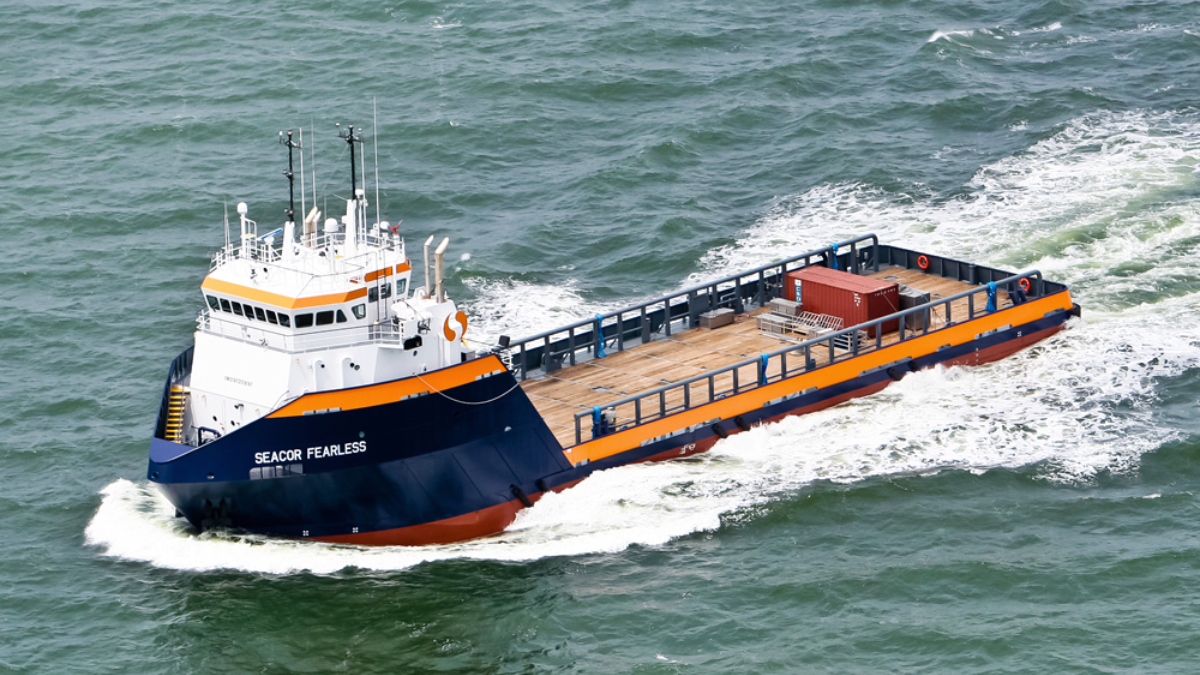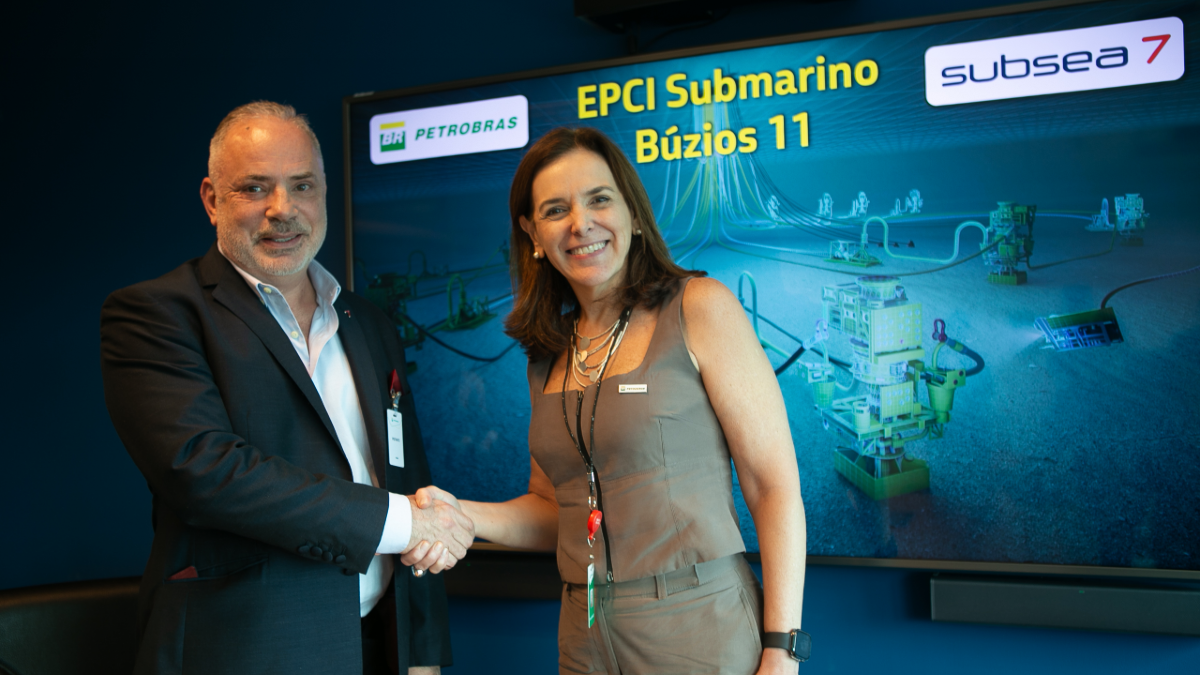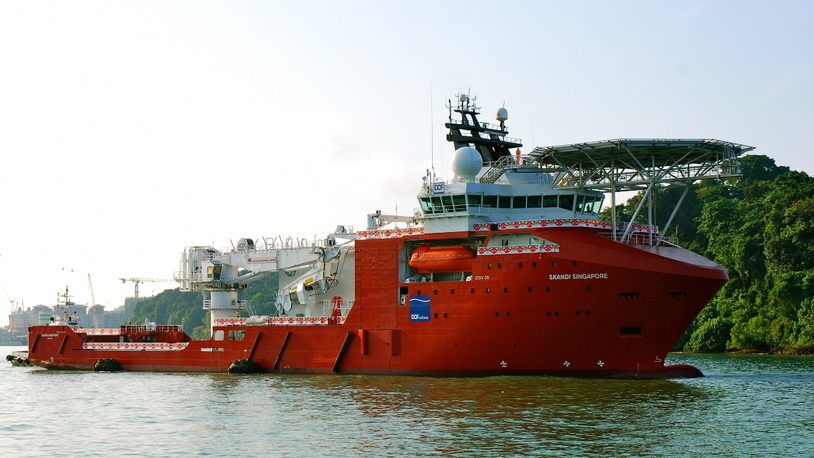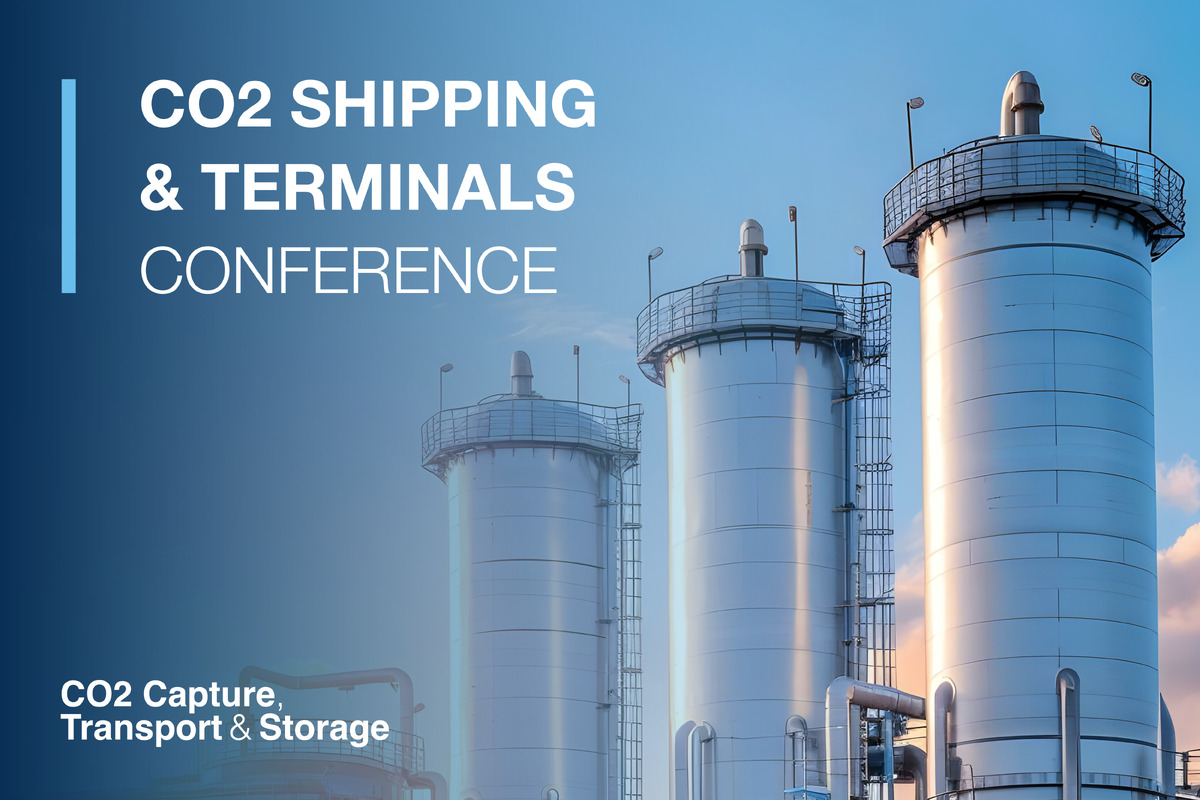Business Sectors
Contents
Deepwater port positions itself for new business
In April, dredging vessels and tugs mobilised ahead of the £25 million Port of Cromarty Firth expansion at Invergordon. Work got underway shortly afterwards on the first stages of what is expected to be an 18-month programme of work.
The expansion project will see the Port of Cromarty Firth reclaim 3.6 hectares of land from the sea and create an additional deepwater berth. Recent announcements have demonstrated the level of interest the port has created internationally across the oil and gas sector, and demand is high amongst companies for operational space. Dredging started to the west of the existing Queens Dock and was completed in May. Around 21,000 cubic metres of silt and mud were removed from the seabed.
Bob Buskie, CEO at Port of Cromarty Firth, said, “This is a crucial step in ensuring the expansion project remains on target. All dredging activity in the Cromarty Firth must halt between the months of May–September to protect the species of dolphins, seals and porpoises that are at home in these waters. We have employed independent environmental consultants, Affric Ltd, to work with us for the duration of the construction works to ensure that there is minimal disruption to the local community and to ensure we meet our environmental responsibilities.”
“The expansion project is essential to ensure that the Port of Cromarty Firth and the Invergordon Service Base can continue to compete in an increasingly competitive and international market. This is good news for the communities who make their living directly and indirectly from port activities.
The expansion is due to be completed in summer 2015, and it is expected to support many full-time employment opportunities. Mr Buskie added, “In addition, we have allocated a dredging and works licence to Nigg Energy Park, also located in the Port of Cromarty Firth, to enable them to commence their own quayside development.”
As work got underway on the project, a new strategy was also being put into place to refocus the port as a modern trust port, with a focus on commercial activity and stakeholder benefit. On 3.6 hectares reclaimed from the sea, a new quay will be completed next summer, involving major levels of construction jobs. The project is part of a new image and approach being adopted by the Cromarty Firth Port Authority, which is responsible for Scotland’s most strategically important deepwater port and a key resource for the energy sector. European Regional Development Fund assistance has been secured for the new development.
“This is a fast-changing era and we need to be at the forefront of managing change for the benefit of our customers and stakeholders,” said Bob Buskie in a supplement about the expansion of the facilities at the port.*
Mr Buskie has also devised a new vision for the port’s future since coming into the new role of chief executive seven months ago. “Our vision is to develop, improve, enable opportunity and safeguard the Cromarty Firth as a port for the future and we need to do this by operating as a truly modern Trust Port,” he told Scottish Provincial Press, who produced the supplement for the port.
Mr Buskie, an experienced CEO who specialises in strategic development, is convinced that, working with partners, the Port of Cromarty Firth can extend the scope and scale of its commercial activities. “We need to reinvigorate our commercial focus,” he said. “Any surplus the port makes is reinvested into port facilities, capabilities and other stakeholder projects. We are now planning to invest in joint venture activities and partnerships to create new business opportunities and income streams. We are currently considering a number of business opportunities across several vertical market segments. Our commercial model is changing to enable us and the supply chain to grow. That represents an exciting challenge for all the management and staff at the port.
“We need to fully recognise the strength of our asset and maximise its potential. The Port of Cromarty Firth has a major advantage over other ports in Scotland – its sheltered position, which protects it from extreme weather. Throughout the major storms we have witnessed this winter, we have remained open for business unlike other east coast ports.”
The diverse range of the port’s activities spans oil rig inspection, repair and maintenance, subsea fabrication work, the cruise industry, servicing the Nigg tanker terminal, providing anchorages, handling bulk cargo, renewable energy and the supply sector. It benefits from the vast body of deep water, unique in Britain.
The 35-acre Invergordon Service Base, which which has a water depth of 12m, is a focal point of its operations, with four decades of experience in dealing with oil and gas structures such as jack-up rigs and semi-submersibles. Sedco 700 was the first rig to come into the firth for repairs 33 years ago. Along with the dedicated cruise berth facility at Admiralty Pier and the bulk cargo centre at Saltburn Pier, the port is a strategic asset for the area, creating major employment and business opportunities.
The port is in strong competition with national and international rivals for offshore oil and gas and renewables projects in the Netherlands, Norway and Denmark. The £25 million expansion project at Invergordon is thus seen as a crucial new tool to help bring new workloads to the firth in the face of such competition. The new quay is seen as being critical to its future. It is hoped the development will have significant local benefit, creating jobs during the construction phase and then full-time equivalent jobs once operational.
The new quayside, which should be open for business in August 2015, will be 154m in length with a minimum deepwater depth of 12m, rising to 14m. It will be a state-of-the-art facility for the handling of deepwater rigs and subsea vessels. Alongside the new quay will be 36,000m2 of hardstanding and blocked laydown space – a key requirement of the growing offshore renewables sector. With more countries and investors focusing on offshore wind power, the new development will also be well placed to take advantage.
“We have identified the business model we need to have, built on open access, clear segmentation and healthy competition in each segment,” said Mr Buskie. “This approach benefits all our customers and creates opportunities for the supply chain and local workforce. The emphasis now is on providing the infrastructure capability to drive our business
forward. Our two existing deepwater berths at Invergordon Service Base are at maximum capacity most of the time, which means the new quay enables us to take on new contracts. It will mean we will have the best deepwater capacity in the country for energy servicing requirements.
“An important trend in the energy industry is that the new generations of diving support vessels and subsea vessels are becoming significantly larger and thus demand more quayside frontage. Our new development will be of great appeal and value to operators of such vessels.”
As Mr Buskie also pointed out, the North Sea abandonment and decommissioning phase of dealing with offshore structures is also looming, and the new development enhances the Port of Cromarty Firth’s appeal as a key player in this market. The firth has handled over 650 rigs over four decades and in November 2013 played host to Prospector 1, owned by Prospector Offshore Drilling, the world’s newest jack-up rig, completing a strong port performance in 2013 in the energy sector.
Another strong year for Aberdeen
Aberdeen Harbour has reported another outstanding year of results for 2013, with vessel tonnage exceeding 28 million tonnes for the second year in succession and nearly 4.9 million tonnes of cargo crossing the quayside. Strong activity across the harbour’s customer base was reflected in its financial results for the year, with turnover up 1.1 per cent to £27.6 million (2012: £27.3 million), delivering pre-tax profits of £9.6 million.
The port has continued to be buoyed by high levels of activity from the region’s oil and gas industry and from its general cargo customers, and it experienced its busiest single week in September, when 690,907 tonnes of shipping entered the port.
Aberdeen Harbour Board chief executive Colin Parker said, “These results are a reflection of the strategic importance of the port to our many and varied customers and emphasises the important role the harbour plays in the economy of the northeast of Scotland.”
Mr Parker said that, with the port operating at near capacity, it has become ever more apparent that additional facilities are required if Aberdeen Harbour is to continue to thrive. A recent independent report conducted by BiGGAR Economics and commissioned by Scottish Enterprise indicated that expanding the harbour at Nigg Bay could be worth an extra £1 billion per annum to the Scottish economy.
He added, “We have worked hard to modernise the port significantly, and in 2013, we completed the £33 million redevelopment of Torry Quay. In light of the forecast for increased activity in years to come, we need to look to other options if we are to continue to keep pace with demand. Activity levels in 2013 have strengthened our commitment to the Nigg Bay expansion concept, and in 2014, we continue to work on finding the best way for this visionary project to be delivered.”
More supply vessels at Port of Lerwick
Passenger vessel visits to Lerwick Harbour may have been adversely affected by the poor weather last winter and spring, but the port recorded strong performance in other sectors in the first quarter of this year. Lerwick remained open during the severe weather, attracting a large increase in offshore-related supply and standby vessels. With twice as many supply vessels, the number of offshore vessels was up by 13 per cent overall to 137, but the number of large construction vessels visiting Lerwick early in the year was lower than in the same period in 2013.
Sandra Laurenson, Lerwick Port Authority chief executive, said, “The January gales meant an unusual start to the year, but with the arrival of spring, the offshore construction season got underway. While 2013 will be a hard act to follow for activity, we have two new berths available since this time last year. Combined with new laydown sites becoming operational soon, Lerwick has plenty of capacity for offshore projects.”
Earlier this year, the accommodation ship Regina Baltica was brought to Lerwick by Petrofac to provide floating accommodation in support of the Shetland gas plant project. At 145m, the former Baltic ferry has recently been operating as an accommodation vessel in both England and Germany. Petrofac plans to accommodate up to 300 people on board. Regina Baltica becomes the fifth floating accommodation unit in Lerwick. Petrofac will charter the barges and vessels through until August 2014.
Lerwick’s evolution and expansion is ongoing, as harbour master Calum Grains explained. As well as current activity, the expectation of investment in Shetland waters in the next few years underlines Lerwick Port Authority’s confidence in developing facilities, creating more room for expanding operations. Following expenditure of £31 million since 2008, the Authority is proposing to spend around £35 million in the next few years.
The completion of a major dredging and land reclamation scheme in 2008 opened the door to further port expansion. The initial phase has included two new quays (2012/13), which added more than 200m, with 9 metres water depth, at Greenhead Base, mainly servicing the offshore industry. The port now has almost 4,000m of quay, including over 1,300m of deepwater berthing and 130,000m2 of laydown.
Construction of 800m of quayside in two projects is due to commence in the fourth quarter of 2014. The outer arm of the L-shaped Holmsgarth North jetty will cost around £17 million and be completed in 2015, with the outer arm providing deepwater berthing for offshore vessels. Major subsea projects have been fuelling demand for space, but the capacity of the port is such that new projects can still be accommodated.
Offshore operators can also utilise the extensive, deepwater Dales Voe Base, where there are expansion plans to increase laydown areas and extend the existing quay. The authority has created 4.5 hectares of land for three additional laydown sites at Rova Head to support energy projects, and as highlighted above, the port’s flexibility in meeting urgently required workers’ accommodation has seen significant growth in the number of flotels at Lerwick. Other activity for which accommodation units are required includes the Schiehallion decommissioning and support for the Quad 204 redevelopment, with the floating production, storage and offloading unit mooring system and subsea infrastructure being handled at Lerwick. Support is also being provided for the Laggan-Tormore development. OSJ
*The Scottish Provincial Press supplement about the port can be found at: www.cfpa.co.uk/Cromarty_Firth_Port_Authority/media/Document-Library/Port-of-Cromarty-Firth-supplement.pdf
Related to this Story
Events
Reefer container market outlook: Trade disruption, demand shifts & the role of technology
Asia Maritime & Offshore Webinar Week 2025
Marine Lubricants Webinar Week 2025
CO2 Shipping & Terminals Conference 2025
© 2024 Riviera Maritime Media Ltd.













